Carl E. Olson's Blog, page 225
April 22, 2012
The post-Resurrection pattern of encounter and transformation
A Scriptural Reflection on the Readings for April 22, 2012, the Third Sunday of Easter | Carl E. Olson
Readings:
• Acts 3:13-15, 17-19
• Ps 4:2, 4, 7-8, 9
• 1 Jn 2:1-5a
• Lk 24:35-48
Yet still I hear Thee knocking, still I hear:
‘Open to Me, look on Me eye to eye,
That I may wring your heart and make it whole …”
In those lines, from her sonnet titled “St. Peter”, the poet Christina Rossetti (1830-1894) expressed with vivid simplicity the love of Jesus for his head disciple. The impulsive and rash fisherman had denied his Master three times on the eve of the Crucifixion. How dark that night must have been and how hot the tears burning his cheeks after the cock crowed (cf. Jn 18:25-27). Peter, who had recognized and proclaimed before the other disciples that Jesus was the Messiah, the Son of God, had crumbled in the face of evil and adversity.
How remarkable, then, that Peter, just a few weeks afterwards, said to the people, “You denied the Holy and Righteous One and asked that a murderer be released to you.” In today’s reading from Acts of the Apostles he twice refers to the people’s denial and desired destruction of Jesus, and exhorts them to look anew at the face of the Holy One: “Repent, therefore, and be converted, that your sins may be wiped away.”
This might seem, at first glance, rather callous and even hypocritical on the part of Peter. But we mustn’t overlook this statement, purposefully made between the accusation of denial and the exhortation to repentance: “Now I know, brothers, that you acted out of ignorance, just as your leaders did…” This is not meant to excuse what had been done, but to insist on two basic facts without which conversion is impossible: without a true encounter with Christ, man is doomed to sit in the darkness of sin and despair; and God has, in his mercy and love, rendered salvation and light with the twisted lines of man’s rebellion: “but God has thus brought to fulfillment what he had announced beforehand…”
Prior to the arrest and death of Jesus, Peter had correctly declared, “You are the Messiah, the Son of the living God.” But his recognition of Jesus was still lacking, for he soon rebuked the Messiah for saying he would be arrested and crucified (Mt. 16:16-23). Peter’s right recognition was from the heavenly Father, but his rebuke came from earthly fear. And he did not fully recognize Jesus or overcome his fear until after the Resurrection; without the light of Easter, his eyes would have remained closed, his heart perpetually quivering.
This same pattern of transformation is seen in today’s Gospel. Two unnamed disciples who had encountered the Risen Lord on the road to Emmaus were telling their story to the other disciples, recounting “how Jesus was made known to them in the breaking of bread,” that is, the Eucharist. Jesus suddenly appeared to them, telling his frightened followers, “Touch me and see.”
St. Cyril of Alexandria noted how Jesus, in directly addressing their fear, showed he truly was “the same one whom they saw suffering death upon the cross and laid in the tomb, even the one who sees mind and heart and from whom nothing that is in us is hid. He gives this to them as a sign: his knowledge of the tumult of thoughts that was within them.” In revealing their fears, Jesus revealed himself; by having them touch his wounds, his wounds healed them of doubt and dread.
We can only begin to really know someone when they freely reveal themselves to us and we, in return, open our hearts to them. Easter is a season of transforming encounter, a time of joyfully recognizing who Jesus Christ is: the Risen Lord, the Holy and Righteous One. He makes himself known to us in the breaking of the bread, the gift of his body, blood, soul, and divinity. In the words of Rossetti:
"And teach thee love because I hold thee dear
And sup with thee in gladness soul with soul,
And sup with thee in glory by and by.”
(This "Opening the Word" column originally appeared in the April 26, 2009, issue of Our Sunday Visitor newspaper.)
April 12, 2012
Tyranny, Religion, and the Fight for Freedom

Tyranny, Religion, and the Fight for Freedom | James Kalb | Catholic World Report
A winning argument for religious freedom cannot be based on anti-Christian premises.
Last month I suggested that if society rejects transcendent standards and natural law, then political and moral order become what those in power make of them.
Fascism and communism show one way that can work out: the will of the charismatic and powerful becomes the highest law. That view of political life is exciting and dramatic, so it sometimes gets traction, but it soon runs into problems. Photos of Europe in 1945 show how big those problems can be.
Liberalism—the outlook on public life now dominant in the West—is much more sober. It appeals to utility rather than charisma, and prefers the rationality of a system to the excitement of battle. For the liberal, getting rid of transcendent standards means deciding questions based on this-worldly practicalities, and rejecting the idea of a natural moral order means affirming our ability to define for ourselves what things are and what they mean to us. Such views are thought to provide a safe, tolerant, and commonsensical solution to the dangers posed by modern skepticism: not the fascist Triumph of the Will, but the liberal Triumph of Choice.
The devil, though, is in the details. Choices conflict, so the Triumph of Choice means nothing unless we know which choices triumph. Liberalism tries to be principled, and its moral skepticism means it can't give the nod to the choices that are simply better. It wants a neutral solution, so it ends up appealing to technical effectiveness and the "do your own thing" attitude implicit in the triumph of individual choice over collective will.
What it tries to do, then, is set up a system in which individuals get as much as possible of whatever they want within the limits imposed by the coherence and effective functioning of the system itself. The nature and needs of the system then provide a standard for deciding conflicts.
Easter Is an Eight Day Feast
From HPRweb.com:
Since the Second Vatican Council and the Universal Norms on the Liturgical Year, the Church has been emphasizing the importance of celebrating the entire eight days of Easter as solemnities, the highest form of celebration possible. Still, there seems to be a reluctance on the part of many to emphasize that the celebration of Easter spans a full eight days—from Easter Sunday to the following Sunday, Divine Mercy Sunday. This eight day period is called the Octave of Easter, ending on Octave Day. How can we begin to bring light to accepting that Easter is, in fact, an eight day feast?
In fact, for many years prior to the Second Vatican Council, there had been an incorrect movement to suppress the importance of the First Sunday after Easter. Some missals had gone so far as nicknaming that Sunday, "Low Sunday," incorrectly contrasting it with Easter Sunday. But now, because of various Church documents, traditions, and more recent revelations that Our Lord has given through St. Faustina, such dynamism is helping Christ's Church recover the solemnity of the fullness of Easter.
From the Old Testament, we learn first about the importance of extended celebrations. Many of the most important feasts that our ancestors celebrated, spanned anywhere from seven to ten days. The feast that most resembles the eight day celebration of Easter is the Feast of Tabernacles. We learn, too, from the Gospel account of this feast, that the last day is also very important. For John tells us: "On the last and greatest day of the festival, Jesus stood up and cried out, 'If anyone thirsts, let him come to me; let him drink who believes in me. Scripture has it: From within him rivers of living water shall flow'" (Jn 7:37-38).
The Gospel accounts that are read on Easter Sunday (cf. Jn 20:1-9), and the following Sunday (cf. Jn 20:19-31), span a one-day and an eight-day period. The Gospel that is read on Easter Sunday recalls the Resurrection that occurred on that morning; the first part of the Gospel for the following Sunday, the Octave Day of Easter, recalls what happened on the evening of that day. The last part of that second Sunday's Gospel recalls what happened on the next Sunday. This perfectly ties in the important events on the day of the Resurrection and the next Sunday. On Easter Sunday, we focus on the Resurrection. On the following Sunday, we focus on the first instruction that Jesus gives to his Church through his Apostles, when he miraculously walks through the door in the upper room, and institutes the Sacrament of Reconciliation.
Let's recall these words in the first part of that Gospel, where Jesus institutes this sacrament: "Jesus said to them again, 'Peace be with you. As the Father has sent me, so I send you.' And when he had said this, he breathed on them and said to them, 'Receive the Holy Spirit. Whose sins you forgive are forgiven them, and whose sins you retain are retained.'"
Jesus' last act before his death was the institution of the Holy Eucharist. The Lord gives us the Sacrament of his body and blood. Then, his very first act after his Resurrection, is the institution of the sacrament to prepare us for this Eucharist by the washing away of our sins. This was not accidental, nor was the event with St. Thomas on the following Sunday.
Have we failed to see this important connection? After years of study about the feast that Jesus requested to be established on the Sunday after Easter as the "Feast of Mercy," we can easily see his reasoning. After years of study, it is quite evident that Jesus was "right on target." Aren't the Sacraments of Confession and the Eucharist, in fact, the Sacraments of Divine Mercy?
Read the entire essay, "Easter Is an Eight Day Feast", written by Robert R. Allard.
April 11, 2012
Music, Books, and Films at 20% Off

Music, Books, and Films at 20% Off
Offer ends Tuesday April 17th, 2012 at 12:00 midnight EST. These prices are available online only through Ignatius.com
The popular Catholic band L'Angelus will be the featured guests on the EWTN show Life on the Rock this coming Thursday, April 12. Be sure to tune in to watch a lively, upbeat & inspiring performance! Check your local listings for show times and repeat performances.
In honor of their appearance on EWTN, Ignatius Press is offering 20% off L'Angelus albums. Be inspired by this acclaimed family band who have a beautiful vocal harmony and the world's finest fiddling! Make sure to check out our other titles for youth & families such as YOUCAT and the new film The War of Vendee also at 20% off!
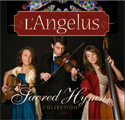 Sacred Hymns
Sacred Hymns
L'Angelus
Drawing on the rich culture of their Acadian & Irish Catholic ancestors, the greatly gifted young trio of singers/musicians from L'Angelus offer unique, deeply moving recordings of 12 of the most beloved hymns in Catholic music. Selections from Bach's Ave Maria to the pure prayer of Teresa of Avila's Muerto Para el Mundo, as well as Tantum Ergo and Salve Regina.
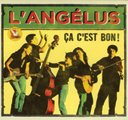 Ca C'est Bon!
Ca C'est Bon!
L'Angelus weaves the Cajun & Celtic cultures of Louisiana into a seamless blend of vocal harmony & the world's finest fiddling. This acclaimed family band has produced one of the best-selling Cajun records in history that celebrates a deep love of life anchored in the Catholic faith. Includes The Waltz of St. Cecilia, Marianne, Le Swing Cajun, The Waltz of the Sorrowful Mysteries and 9 more.
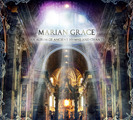 Marian Grace
Marian Grace
Ancient Hymns and Chants
A gorgeous recording by Marian Grace, a very talented young Nashville-based musical group whose lofty goal is to uncover the Church's richest musical treasures and to transform culture through the marriage of beauty and truth. In addition to Marian Grace, the various chants on the album are sung by the Dominican Sisters of St. Cecilia and the FRATERNUS brothers of Nashville, TN.
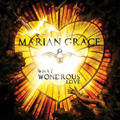 What Wondrous Love
What Wondrous Love
Following up on the heels of their highly acclaimed self-titled debut album last year, Marian Grace presents another soul stirring new collection of very beautiful famous hymns and prayers that soar with angelic vocals, uniquely crafted piano and string arrangements, and stunning overall production.
His Love Remains
Collin Raye
This new release from Collin Raye, captures for the first time the source of his rock solid personal inner strength which carried him "through it all" during many trials of personal suffering, including the loss of his precious granddaughter Haley, who died from a rare neurological disease.
Everything Changes
Marie Bellet
The first new album by the Nashville songbird in several years is a winner. This is not "Marriage and Family 101" anymore! A bit further along on that journey, with more experiences of life, family, love and marriage, these songs reflect the changes that come with launching kids out into the world: letting go, rolling with reality, learning not to take trouble personally and resting in the rhythm of perseverance.
Dream With Me
Jackie Evancho
One of 2011's most heavily anticipated new releases, Dream with Me features a repertoire of classical arias and popular classics handpicked to suit Jackie's angelic voice. Her range is so great that she ably shifts from the Disney classic When You Wish Upon A Star to Puccini's Nessun Dorma on this new album.
Our Lady, Mother of God
18 Chants to Celebrate the Virgin Mary
This glorious anthology features Marian chants from the two great traditions of Christianity, the East and the West, from the finest chant monasteries in the world. These are chants born from prayer and contemplation. They praise God through Our Lady. The words are sacred, often taken from the Holy Scriptures, particularly the Psalms
Catholic Children's Classics
This latest collection from the popular "Catholic Classics" series features the celestial voices of the Pro Musica Youth Chorus-a gifted, experienced choral group, led by accomplished artistic director, William Chin, who led the group on tours nationally and internationally, including a recent performance in Carnegie Hall. The innocence and purity of these young voices portray sentiments of bittersweet sorrow, deep joy, and mysterious holiness. The children are accompanied by a talented array of instrumentalists.
Concerto
One Night in Central Park
Andrea Bocelli
A new recording of a live concert at Central Park's Green Lawn in September 2011, by the beloved Italian tenor with the New York Philharmonic for a truly memorable evening in a magnificent setting. Joining Bocelli are special guests Tony Bennett, Celine Dion, David Foster, Chris Botti, Ana Martinez, Bryn Terfel and more. Also available as a DVD/CD set.
Books
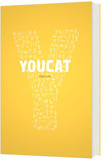 YOUCAT
YOUCAT
Youth Catechism of the Catholic Church
Christoph Cardinal Schoenborn
YOUCAT is short for Youth Catechism of the Catholic Church, which was launched on World Youth Day, 2011. Developed with the help of young Catholics and written for high-school age people and young adults, YOUCAT is an accessible, contemporary expression of the Catholic Faith. The appealing graphic format includes Questions-and-Answers, highly-readable commentary, summary definitions of key terms, Bible citations and inspiring and thought-provoking quotes from Saints and others in the margins. What's more, YOUCAT is keyed to the Catechism of the Catholic Church, so people can go deeper.
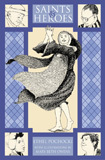 Saints and Heroes
Saints and Heroes
Ethel Pochocki
In this updated anthology Ethel Pochocki (author of Once Upon a Time Saints books) has selected a mixture for older youth of "soldiers and sailors, kings and queens, doctors, lawyers, beggars, thieves, poets, diplomats, fools and cranks," and she has told their stories in her characteristic lively style. She shows how brave and generous such people were; how they challenged the society they lived in; and how they have since become light-bearers to enthral future generations of young people.
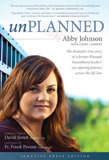 Unplanned
Unplanned
The Dramatic True Story of a Former Planned Parenthood Leader's Eye-Opening Journey Across the Life Line
Abby Johnson
Abby Johnson quit her job in October 2009. That simple act became a national news story because Abby was the director of a Planned Parenthood clinic in Texas who, after participating in her first actual abortion procedure, walked across the road to join the Coalition for Life. Unplanned is a heart stopping personal drama of life-and-death encounters, a courtroom battle, and spiritual transformation that speaks hope and compassion into the political controversy that surrounds this issue.
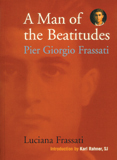 A Man of the Beatitudes
A Man of the Beatitudes
Pier Giorgio Frassati
Lucianna Frassati
A beguiling and moving biography of Pier Giorgio Frassati, a handsome, athletic and fun-loving young man from a rich, aristocratic Italian family in the 1920's who was recently beatified by Pope John Paul II. Pier Giorgio turned from a life of privilege to one devoted to working with the poor, and was a courageous witness of Christian faith and charity to many others.
DVDs
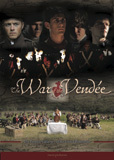 The War of Vendee
The War of Vendee
This inspiring new film from Navis Pictures, producers of St. Bernadette of Lourdes, tells the moving story of France's little known religious civil war in the years following the French Revolution. Featuring an exuberant and gifted cast of over 250 young Catholics, it is a powerful story of sacrifice and martyrdom, but told here with a careful sense of reserve, and is an outstanding movie for the whole family.
 Changing Sides
Changing Sides
How a Pro-life Presence Changed the Heart of a Planned Parenthood Director
This film tells the powerful true story of the conversion of a dedicated Planned Parenthood director to a leading Pro-life Activist. Abby Johnson was the director of the abortion facility that was the launching pad of the bold new pro-life effort - 40 Days for Life.
Catholic World Report and Homiletic & Pastoral Review
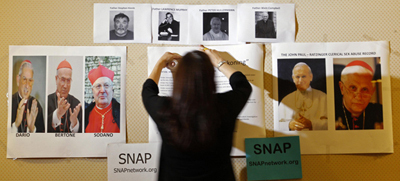
The Gray Lady Makes SNAP-Friendly Judgments
by David F. Pierre, Jr.
New York Times allies with advocacy group in new attack against Catholic Church
The New York Times would have you believe that the Catholic Church is on a heartless crusade to expose the names, addresses, and phone numbers of anonymous victims of atrocious clergy abuse. According to a recent Times editorial, Church leaders are "threatening to expose private files compiled by advocates for abuse survivors [and] are giving victims new reason to retreat into fear and secrecy."
Then there is the reality.
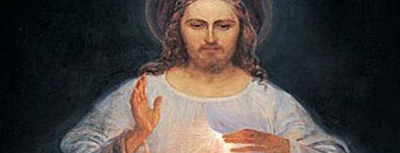
Easter Is an Eight Day Feast
by Robert R. Allard
Since the Second Vatican Council and the Universal Norms on the Liturgical Year, the Church has been emphasizing the importance of celebrating the entire eight days of Easter as solemnities, the highest form of celebration possible. Still, there seems to be a reluctance on the part of many to emphasize that the celebration of Easter spans a full eight days—from Easter Sunday to the following Sunday, Divine Mercy Sunday. This eight day period is called the Octave of Easter, ending on Octave Day. How can we begin to bring light to accepting that Easter is, in fact, an eight day feast?
In fact, for many years prior to the Second Vatican Council, there had been an incorrect movement to suppress the importance of the First Sunday after Easter. Some missals had gone so far as nicknaming that Sunday, "Low Sunday," incorrectly contrasting it with Easter Sunday. But now, because of various Church documents, traditions, and more recent revelations that Our Lord has given through St. Faustina, such dynamism is helping Christ's Church recover the solemnity of the fullness of Easter.
For Additional Sale Items Click HERE!
Items are not sold on approval.
Periodically we make available -- only to you, our valued repeat customers -- special offers which are not available to the general public. We offer these discounted prices as our gift to those who help us by using Ignatius.com. Please do not ask for retroactive price consideration. We cannot accommodate those requests. Many thanks.
Sex, Sanity, and Eternity
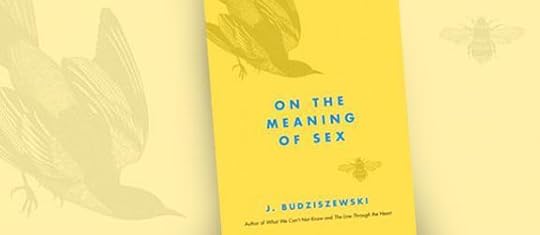
Sex, Sanity, and Eternity | An Interview with J. Budziszewski | Catholic World Report
J. Budziszewski, who holds a Ph.D. from Yale University, is a professor of government and philosophy at the University of Texas at Austin. He is the author of several books, including The Revenge of Conscience, How to Stay Christian in College, The Line Through the Heart: Natural Law as Fact, Theory, and Sign of Contradiction, and What We Can't Not Know: A Guide. He spoke with Carl E. Olson, editor of Catholic World Report, about his most recent book, On the Meaning of Sex (ISI, 2012).
CWR: I'll begin by playing the devil's advocate, as it were, and ask: Why does the world need another book about sex?
Budziszewski: There are a lot of books about sex, aren't there? Recently mine ended up on a list of the 10 "most provocative" books about sex of the month. Of the month?
I think it must have been put on the list by accident—the others had titles like Dirty Minds, and discussed things like the supposed delights of sex with multiple partners. But maybe that answers your question about why the world needs yet another book about the subject. It needs another kind of book about the subject.
CWR: And why are Catholics so obsessed with sex when they are so obviously frightened by it as well? Have you written the book to destroy the joy of sex? (While you answer, I'll remove my tongue from my cheek.)
Budziszewski: The world has already worked pretty hard to destroy the joy of sex. One of the books on the list that I mentioned promoted sex "marathons." Does that sound like fun to you? To me it sounds like work; it has an air of desperation. And what about all those broken relationships and families? Does that seem joyful? One seems to see a terrain of unutterable sweetness, despoiled by unmentionable pain. What interests Catholics like me is the prospect of redeeming the unutterable sweetness.
CWR: The opening chapter, "Does Sex Have to Mean Something?", highlights the sexual schizophrenia that pervades the dominant culture, especially since the so-called "sexual revolution." What are some of the symptoms of this problem? And how does it lead to a profound cognitive dissonance when it comes to the inherent meaning of sex?
Continue reading the interview at www.CatholicWorldReport.com....
Paul Badde discusses the Holy Veil of Manoppello ...
... with ZENIT:
Subtitled "From the Shroud of Turin to the Veil of Manoppello," the book complements Badde's earlier work in "The Face of God" and a documentary called "The Holy Face" (both also published by Ignatius.)
Badde believes that the rediscovery of the Holy Veil of Manoppello answers questions that have kept some from acknowledging the Shroud of Turin as the cloth Joseph of Arimathea used to enwrap Christ's body for burial. ...
ZENIT: Tell us what you understand the shroud and the "veil" to be -- the veil, or napkin, above all is less well-known, but it is not Veronica's veil?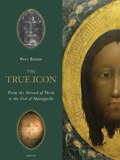
Badde: The Shroud and the napkin are referring to the very same shroud and the napkin St. John is referring to in his Gospel of the Resurrection, naming in them in Greek Othonia and Soudarion. Having said this, the expression Soudarion is the first name of the napkin. Later, it attracted many other names since nobody could explain where it came from -- realizing at the same time that it must have come into being in an inexplicable way. Therefore, it had for instance the name: acheropoieton (not made by man's hands), Image of King Abgar, Camuliana veil, Mandylion, True Icon (Vera Icon) and Veronica's veil. In fact, all these names meant the same piece of cloth. Last year, Professor Antonio Paolucci, the director of the Vatican Museums, accepted that it had been kept as the "True Icon" in St. Peter's Basilica from the year 706 through 1527. And that year, it got away during the confusion of the Sack of Rome. Until that date it had been the most precious treasure of the popes.
[The relationship between the two cloths] is very well described in the Gospel of St. John. The shroud had been used to wrap Jesus' dead body. And the napkin had been laid over his face, although we do not know by whom? Was it Mary? Or Mary Magdalene, or Joseph of Arimathea or even Pilatus' wife? We just do not know. We just know that it had been extremely delicate and precious and expensive – just as the ointments the women brought to the grave as if they would bury a king.
Read the entire interview. Learn more about Badde's new book, The True Icon: From the Shroud of Turin to the Veil of Manopello.
April 10, 2012
Cardinal Timothy Dolan guests on "Face the Nation (Shaped by JFK's 1960 Speech)"
Cardinal Timothy Dolan was a guest on "Face the Nation" on Easter Sunday and the host, Bob Schieffer, immediately got to the issue that is weighing on the hearts and minds of every serious person in April 2012: Camelot! Well, sort of:
BOB SCHIEFFER: I want to talk a little politics with you, your eminence back in 1960.
CARDINAL TIMOTHY DOLAN: I'm not surprised.
My guess is that Cardinal Dolan figured there were three places the interview could go: down the "Why does Catholic Church hate women?" highway, up the "When will the Catholic Church catch up with the times?" river, or over to the "Didn't President Kennedy establish for all eternity the Catholic understanding of 'State first, Church silent'?" grill. Considering Kennedy was murdered nearly fifty years ago and that his already flimsy reputation as upstanding, morally superior politician/POTUS has been badly bruised in recent years, the third option was likely the best for Schieffer to pull out of his fraying bag of journalistic talking points. And so he did:
BOB SCHIEFFER: When John Kennedy became the first Catholic President, he made a speech during the campaign, because he said flatly, he wanted people to know and he wanted to assure them that he thought there was a separation between church and state. Here is the way he put it.
CARDINAL TIMOTHY DOLAN: Yeah.
JOHN F. KENNEDY (September 12, 1960): I believe in an America where the separation of church and state is absolute; where no Catholic prelate would tell the President, should he be Catholic, how to act, and no Protestant minister would tell his parishioners for whom to vote.
BOB SCHIEFFER: Now people in both parties have referred back to that over the years as-- as a good definition of church and state, but during this campaign year, one of the Republican candidates, Rick Santorum, said this about it.
RICK SANTORUM (November 11, 2011): If I had the opportunity to read the speech, I almost threw up. He should read the speech. It's-- in my opinion it was the beginning of the secular movement of politicians to separate their faith from the public square. And he threw faith under the bus in that speech.
Which led to a good question from Schieffer: "Your eminence, where do you think the line should be between church and state? Is there, should there be a separation?" It was a wide open question, with many possible answers. Cardinal Dolan responded:
Just in: Cardinal Pell and Richard Dawkins don't exchange Christmas cards
The two men—one of the leading light of the Catholic Church in Australia and the other the most well-known of the so-called "new atheists"—met in a highly anticipated (and highly rated, as it turned out) televised debate one (or two?) days ago. The Sydney Morning Herald reports:
It was a match-up made in Q&A heaven: two pugilists of opposing convictions going head-to-head in a debate about the existence of God.
Australia's highest-ranking Catholic and Sydney's archbishop, Cardinal George Pell, spent an hour with evolutionary biologist and celebrity atheist, Professor Richard Dawkins taking questions covering everything from evolution, resurrection and eternal damnation.
Frustration and something bordering on barely concealed mutual disdain boiled over more than once during the ABC television show.
The hour-long debate can be viewed online; the transcript is also available. Here is one exchange regarding the afterlife:
Read the entire post on the Catholic World Report blog.
The profound, unapologetic and timely reflections of Archbishop Chaput

The profound, unapologetic and timely reflections of Archbishop Chaput | Michael J. Miller | Catholic World Report
Almost fifty years ago, the writings on religious pluralism of an American Jesuit, John Courtney Murray, helped the Fathers of the Second Vatican Council to draft a Declaration on Religious Liberty in a world where millions of Christians were being ruled by officially atheistic regimes.
On March 23, 2012, hundreds of citizens gathered in front of Independence Hall in Philadelphia to participate in a Rally for Religious Freedom, in protest of the U.S. Government's Health and Human Services Department mandate that compels institutions and individuals to pay for insurance coverage of contraception and abortion despite their conscientious objections.
The United States used to be such a staunch defender and beacon of religious freedom. What happened?!
Charles J. Chaput, O.F.M. Cap., who now serves as Archbishop of Philadelphia, incisively explains many of the reasons for this paradox in a new e-book entitled A Heart on Fire: Catholic Witness and the Next America, published by Image Books (a division of Random House, Inc.).
The author neatly captures the fundamental tension in the American religious scene by contrasting the courage and pioneering spirit of the Christians who first came to these shores and the skepticism of their materialistic descendants just a few generations later (symbolized respectively by Bunyan's perennial classic, The Pilgrim's Progress, and satirical portrayals of Protestantism in short stories by Nathaniel Hawthorne).
April 9, 2012
The Science of Nothing

The Science of Nothing | William E. Carroll | Catholic World Report
A review of Lawrence Krauss' book A Universe From Nothing: Why There is Something Rather Than Nothing.
Why is it so important for believers to affirm that in creating all that is God does not work with or use anything at all—nothing, that is, other than his own omnipotence? When the doctrine of creation out-of-nothing was being formulated in the early Church, it seemed obvious to the Church Fathers that the opening of Genesis stood out in stark contrast to the prevailing philosophical and scientific view that the universe is eternal. A Platonic Demiurge, for example, or an Aristotelian Unmoved Mover, would work with already existing stuff to bring order and/or motion to the world. Such a god would not be the complete cause of all that is, would not be the sovereign Lord of the universe. To emphasize that God, revealed in the Bible, was such a complete cause of existence meant that creation had to be "out of nothing." What this meant was that God did not use anything at all—no pre-existent matter, no primal chaos—in his creative act.
For the Church Fathers, creation out-of-nothing also countered any temptation to think that matter was evil and not created by God. All that is comes from God, and all that is, is good. There are not, as the Manicheans thought, two first principles, one supremely good, the other supremely evil. Systematic reflection in the Christian tradition (and in Jewish and Muslim traditions as well) on what it means for God to create involved difficult questions about the intelligibility of something's coming from nothing, given the fundamental premise that it is not possible to get something from nothing. It also involved discussions about the relationship between a created universe, generally identified as one that is temporally finite (i.e., with a beginning), and the well-established scientific view that the universe is eternal. It would not be until the 13th century that the doctrine of creation would find its fullest expression (and its most able defender) in Thomas Aquinas.[1]
For Thomas, God's act of creating the universe is not primarily some distant event. Creation is the on-going, complete causing of all that is. To be created means to have a relationship of complete dependency, of everything that one is, upon God as cause.
Carl E. Olson's Blog
- Carl E. Olson's profile
- 20 followers



